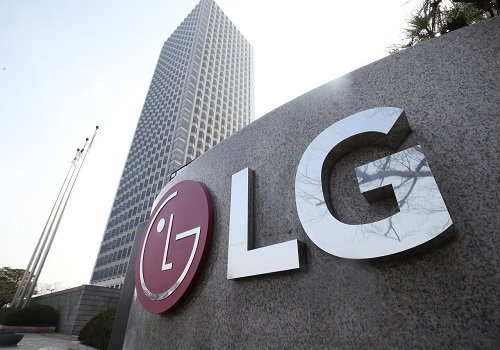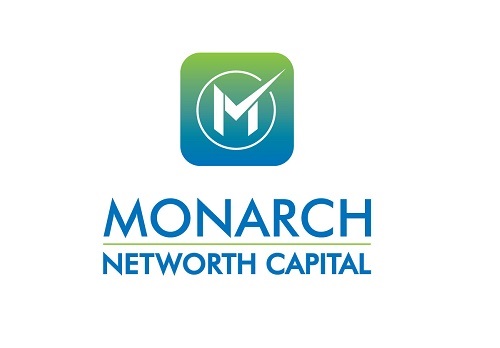Gold trading range for the day is 77530-78710 - Kedia Advisory

Follow us Now on Telegram ! Get daily 10 - 12 important updates on Business, Finance and Investment. Join our Telegram Channel
Gold
Gold prices rose by 0.37% to settle at 78,039, driven by increased demand for safe-haven assets amid escalating geopolitical tensions in the Middle East. Hezbollah's announcement of entering a more intense phase in its conflict with Israel, along with Israeli strikes in Beirut’s southern suburbs, has heightened market uncertainty, pushing investors towards gold. Additionally, the upcoming US presidential elections have added to gold's appeal as a hedge against potential volatility. Expectations of looser monetary policies from major central banks, including the PBoC lowering key rates and the ECB's rate cut last week, further supported gold prices. However, strong US economic data has tempered expectations of a more dovish stance from the Federal Reserve. In India, physical gold demand weakened ahead of a key festival due to record-high prices, leading dealers to offer discounts of up to $8 per ounce, compared to last week's $3 premium. In China, discounts narrowed to $3-$14 below international spot prices, down from $15-$31 previously. Retail demand in China has been sluggish due to high prices and an economic slowdown. Global gold demand, excluding over-the-counter trading, dropped 6% year-on-year in the second quarter, largely due to a 19% decline in jewellery consumption, according to the World Gold Council. Technically, the market is under short covering, with open interest down by -4.09% to 15,186, while prices increased by 290. Gold is now supported at 77,780, with a potential test of 77,530 if this level breaks. Resistance is likely at 78,370, and a move above this could see prices testing 78,710.
Trading Ideas:
# Gold trading range for the day is 77530-78710.
# Gold climbed bolstered by increased demand for safe-haven assets.
# Investors are closely watching developments in the Middle East as tensions flared
# The uncertainty surrounding the upcoming US presidential elections is also further increasing the appeal of safe-haven assets.
Silver
Silver prices surged by 2.14% to settle at 97,448, driven by safe-haven demand amid escalating geopolitical tensions in the Middle East, US election uncertainties, and expectations of further monetary easing. The metal’s appeal was further bolstered by rising expectations of increased industrial demand, particularly in the clean energy sector, as silver plays a crucial role in solar panel production. Additionally, China’s central bank cut benchmark lending rates to record lows, improving the economic outlook in the world's top metals consumer. The People’s Bank of China (PBOC) reduced its one- and five-year loan prime rates by 25 basis points to 3.1% and 3.6%, respectively, and also hinted at further easing by potentially lowering banks' reserve requirements. In India, silver imports are projected to nearly double this year, driven by demand from solar panel and electronics manufacturers, as well as investors seeking better returns compared to gold. India, the world’s largest silver consumer, imported 3,625 metric tons in 2023, and imports have surged to 4,554 tons in the first half of 2024, compared to just 560 tons in the same period last year. Industrial buyers are stockpiling silver due to depleted inventories from 2023, further supporting global prices, which are hovering near decade-high levels. From a technical perspective, silver is witnessing fresh buying, with a 1.7% increase in open interest, settling at 26,481 contracts while prices gained 2,046 rupees. Silver finds support at 96,430, and a drop below this level could see a test of 95,420. On the upside, resistance is seen at 98,525, with further gains potentially testing 99,610.
Trading Ideas:
# Silver trading range for the day is 95420-99610.
# Silver climbed as US election jitters, escalating Middle East tensions and bets on further monetary easing drove safe-haven demand.
# Expectations of stronger silver demand amid the global shift toward cleaner energy also supported prices.
# The gold/silver ratio has dropped sharply below 80.50 points, falling near to a July low.
Crudeoil
Crude oil prices rose by 1.59% to settle at 5,932, driven by escalating geopolitical tensions in the Middle East and economic stimulus measures from China, the world’s largest oil importer. The heightened conflict between Israel and Hezbollah, along with Israel's vows of retaliation against Iran, has increased the risk of supply disruptions. Over the weekend, a Hezbollah drone attack targeting Israeli Prime Minister Netanyahu's residence prompted Israel to launch a military offensive in Lebanon, further elevating geopolitical risks. In addition, China's recent stimulus measures, including lending rate cuts, aimed at reviving economic growth have also contributed to the rise in crude prices. However, concerns about weak demand in China and expectations of rising global oil supplies, with OPEC+ set to restore output from December, continue to loom over the market. U.S. oil production reached a record 13.5 million barrels per day (bpd) in the week ending October 11, according to the U.S. Energy Information Administration (EIA). Meanwhile, U.S. crude oil inventories fell by 2.192 million barrels during the same period, against market expectations of a 2.3 million barrel build. Technically, the market is experiencing short covering, with open interest dropping by -0.81% to settle at 14,264, while prices rose by 93. Crude oil finds support at 5,853, and if this level is breached, it could test 5,775. On the upside, resistance is expected at 5,974, and a move above this level could push prices toward 6,017.
Trading Ideas:
# Crudeoil trading range for the day is 5775-6017.
# Crude oil rose driven by Middle East tensions threatening supply disruptions and economic stimulus moves by China.
# Heightened conflict between Israel and Hezbollah, and Israel's vows of retaliation against Iran, have increased geopolitical risks.
# China implemented stimulus measures, including lending rate cuts, to revive growth.
Naturalgas
Natural gas prices rose by 1.62% to settle at 194, supported by lower production so far this month and expectations of cooler weather, which is likely to increase heating demand next week. Despite these factors, meteorologists predict warmer-than-normal weather through early November, potentially keeping overall heating demand lower than usual for this time of year. According to LSEG, natural gas output in the Lower 48 U.S. states has averaged 101.5 billion cubic feet per day (bcfd) in October, down from 101.8 bcfd in September, and significantly lower than the record 105.5 bcfd set in December 2023. With cooler weather on the horizon, gas demand, including exports, is forecasted to rise from 96.0 bcfd this week to 100.2 bcfd next week. Additionally, flows to U.S. LNG export plants have increased to 13.1 bcfd so far in October, up from 12.7 bcfd in September. The U.S. continues to maintain its position as the world's largest LNG supplier, spurred by strong global demand and supply disruptions following Russia's invasion of Ukraine. The U.S. Energy Information Administration (EIA) forecasts a slight decline in gas production from a record 103.8 bcfd in 2023 to 103.5 bcfd in 2024, while domestic gas consumption is expected to rise to a record 90.1 bcfd. U.S. LNG exports are projected to grow further, reaching 12.1 bcfd in 2024 and 13.8 bcfd in 2025. Technically, the market is witnessing short covering, with a 12.59% drop in open interest settling at 38,652 contracts, while prices gained by 3.1 rupees. Natural gas finds support at 188.7, and a drop below this level could test 183.4. On the upside, resistance is seen at 198.5, with further gains potentially testing 203.
Trading Ideas:
# Naturalgas trading range for the day is 183.4-203.
# Natural gas climbed on lower output and forecasts for cooler weather
# That price increase came even though meteorologists forecast the weather would remain mostly warmer than normal through early November.
# Average gas output in the Lower 48 U.S. states slipped to 101.5 bcfd so far in October, down from 101.8 bcfd in September
Copper
Copper prices declined by -0.91% to settle at 814.8, driven by a stronger dollar, which approached levels close to 103.8, dampening hopes for a swift decrease in interest rates by the Federal Reserve. Despite China's central bank lowering benchmark lending rates to record lows, with the one- and five-year loan prime rates cut by 25 basis points to 3.1% and 3.6%, respectively, the pressure from the strong dollar outweighed the positive impact of China's economic stimulus. The People’s Bank of China also indicated the possibility of further measures, such as reducing banks' reserve requirements before the end of the year. On the supply side, copper inventories in Shanghai warehouses rose by 7.6%, signaling an increase in supply. Meanwhile, Peru’s copper production saw a 10.7% rise in August, the highest monthly output this year, although year-to-date output remained below 2023 levels. The global copper market posted a surplus of 91,000 metric tons in July, according to the International Copper Study Group (ICSG), continuing from a surplus of 113,000 metric tons in June. Despite these factors, the outlook for copper remains buoyed by strong demand expectations from the clean energy transition, even as the global refined copper market remains in surplus for the first seven months of 2024. Technically, copper is under fresh selling pressure, with a 1.36% increase in open interest to 6,335. Prices have found support at 808.1, and a break below this level could see a test of 801.2. Resistance is likely at 827, and a move above this level could push prices towards 839.
Trading Ideas:
# Copper trading range for the day is 801.2-839.
# Copper dropped as dollar index approached 103.8 close to high levels not seen since early August.
# China’s central bank reduced benchmark lending rates to record lows, boosting the economic outlook.
# Expectations of strong copper demand driven by the shift toward cleaner energy raised concerns about a shortfall.
Zinc
Zinc prices fell by 0.37% to settle at 283.85, driven by profit booking and diminished hopes for a swift decrease in interest rates by the Federal Reserve. However, the demand outlook remains supported by China’s central bank slashing benchmark lending rates to record lows, with the People's Bank of China reducing its one- and five-year loan prime rates by 25 basis points to 3.1% and 3.6%, respectively. These rate cuts are expected to ease pressure on household mortgages, potentially spurring home buying, and supporting broader economic growth. Despite the slower pace of growth, China’s economy expanded more than expected in Q3 2024, with better-than-expected retail sales, industrial production, and fixed asset investment figures for September. In the global market, the zinc industry faces a supply deficit, as smelters reduce refined metal production due to a raw materials squeeze. The International Lead and Zinc Study Group (ILZSG) now forecasts a 164,000-ton deficit for 2024, compared to a previously anticipated surplus of 56,000 tons. China's demand growth is expected to be subdued at just 0.7%, largely due to the property sector struggles. Technically, the market witnessed long liquidation with a 11.03% drop in open interest, settling at 2,024 contracts, while prices fell by 1.05 rupees. Zinc finds support at 281.4, and a move below this level could test 278.9. On the upside, resistance is seen at 288, with further gains potentially pushing prices toward 292.1. Despite short-term fluctuations, tighter market fundamentals could drive zinc prices higher in 2024, with BMI forecasting prices at $2,700 per metric ton.
Trading Ideas:
# Zinc trading range for the day is 278.9-292.1.
# Zinc dropped on profit booking as hopes for a swift decrease in interest rates by the Fed diminish.
# China’s economy grew more than expected in the third quarter, but at the slowest pace since the first quarter of 2023.
# PBOC moved to support China’s equity market and announced that it could lower banks’ reserve requirements again before the year ends.
Aluminium
Aluminium prices fell by -0.67% to settle at 237.4, pressured by rising global primary aluminium output, which increased by 1.3% year-on-year to 6.007 million tonnes in September, according to the International Aluminium Institute (IAI). Production in China, the world's largest aluminium producer, remained robust due to firm demand and profitable margins. In September, China produced 3.65 million metric tons of primary aluminium, 1.2% higher year-on-year, with daily output averaging 121,667 tons, surpassing the August average. Hydropower supply in China’s Yunnan province remained stable due to improved summer rainfall, supporting high operational rates among producers. However, the downside in prices was limited by China's recent rate cuts and expectations of further stimulus measures to boost economic growth. China’s industrial production grew by 5.4% year-on-year in September, exceeding market forecasts, while retail sales climbed by 3.2% over the same period, also surpassing expectations. These positive economic indicators reinforce the belief that China will implement additional stimulus measures to further spur growth. Despite these supportive factors, global aluminium production continues to rise, with total output for the first nine months of the year up 4.6% compared to the same period in 2023. Producers in China enjoyed an average profit of 2,379 yuan per ton in September, benefiting from higher aluminium prices. Technically, the aluminium market is undergoing long liquidation, with open interest dropping by -14.29% to 1,446, while prices declined by 1.6. Aluminium has support at 235.4, and a break below this level could lead to a test of 233.4. Resistance is now likely at 241, and a move above this level could push prices toward 244.6.
Trading Ideas:
# Aluminium trading range for the day is 233.4-244.6.
# Aluminium dropped as global aluminium output rises 1.3% year on year in September
# However downside seen limited amid rate cuts China and expectations of further stimulus to spur economic growth.
# Hydropower supply in the southwestern Yunnan province remained sufficient amid improved rainfall during the summer season
Cottoncandy
Cottoncandy prices rose by 1.7% to settle at 57,420, driven by supply concerns after the USDA lowered India's cotton production forecast for the 2024-25 season to 30.72 million bales due to crop damage from excessive rains and pest issues. Additionally, ending stocks were reduced to 12.38 million bales, further tightening supply. However, the upside remained limited by weak demand in yarn markets, along with payment constraints. Globally, the USDA increased cotton production estimates by over 200,000 bales, with higher output projected in China, Brazil, and Argentina, offsetting declines in the U.S. and Spain. In India, cotton acreage for the current Kharif season fell by 9%, as farmers shifted to other more lucrative crops. Meanwhile, the Cotton Association of India (CAI) estimated closing stocks for the 2023-24 season at 30.19 lakh bales, slightly higher than the previous year, with consumption and pressing also seeing marginal increases. Imports during the season rose to 17.5 lakh bales, boosting overall supply, while exports surged by 84%, driven by demand from countries like Bangladesh and Vietnam. Technically, Cottoncandy is experiencing fresh buying, with open interest rising by 1.54% to 132 as prices gained 960. Support is currently seen at 57,200, with a potential test of 56,990 if this level is breached. On the upside, resistance is expected at 57,620, and a move above this could push prices towards 57,830. This rise in cotton prices reflects both domestic supply constraints and global market dynamics, while demand concerns may cap further gains in the short term.
Trading Ideas:
# Cottoncandy trading range for the day is 56990-57830.
# Cotton rose as USDA has lowered India's cotton production forecast for the 2024-25 season to 30.72 million bales
# USDA has raised global cotton production estimates by over 200,000 bales.
# Cotton production is projected to increase in China, Brazil, and Argentina, more than offsetting reductions in the US and Spain.
# In the global 2024/25 cotton balance sheet, beginning stocks, production and consumption are increased.
Turmeric
Turmeric prices rose by 1.14% to settle at 13,858, driven by reports of potential crop damage due to heavy rains, which could result in higher losses than initially anticipated. However, the upside was limited by lower demand amid rising arrivals. Total arrivals stood at 14,915 bags, down from the previous session’s 16,975 bags, with a sharp drop in arrivals at Sangli, where only 890 bags arrived compared to 11,000 in the previous session. With five months still left until the harvest, the combination of reduced supply and unfavorable weather is expected to support higher prices in the coming weeks. Despite this, the upside is capped by news of increased sowing, especially in major turmeric-producing states like Maharashtra, Telangana, and Andhra Pradesh. Turmeric sowing on the Erode line has reportedly doubled compared to last year, and overall, India’s turmeric cultivation area has increased to an estimated 3.75-4 lakh hectares. In Indonesia, dry weather has accelerated harvesting, which could further impact prices with the combination of rising acreage and low export demand. Turmeric exports during Apr-Aug 2024 dropped by 6.46% to 77,584.7 tonnes compared to the same period in 2023, while imports surged by 340.21%, reaching 14,073.83 tonnes. This shows a significant shift in the supply-demand dynamics. From a technical perspective, the market witnessed short covering, with a 1.58% drop in open interest, settling at 12,460 contracts as prices rose by 156 rupees. Turmeric finds support at 13,684, and a move below could test 13,510. On the upside, resistance is seen at 14,022, with further gains potentially testing 14,186.
Trading Ideas:
# Turmeric trading range for the day is 13510-14186.
# Turmeric prices gained amid reports of crop damage due to heavy rains.
# Turmeric exports during Apr-Aug 2024, dropped by 6.46 percent at 77,584.70 tonnes compared to Apr-Aug 2023.
# India’s festival season demand is expected to surge, particularly with CAIT forecasting 48 lakh marriages in the upcoming season.
# In Nizamabad, a major spot market, the price ended at 14011.5 Rupees gained by 1.39 percent.
Jeera
Jeera prices rose by 0.46% to settle at 25,290, driven by short covering and strong export demand. Tensions in the Middle East over the past two months have bolstered business for cumin seed exporters from Gujarat, with Indian cumin priced more competitively compared to Chinese cumin, further supporting demand. Export prices for cumin are currently between $3,150 and $3,200 per tonne, and Pakistan, as well as several other countries, are buying Indian cumin. Over the last month, 100 to 125 containers of cumin have been exported, including 25 containers to China and 35 to 40 to Bangladesh. However, the upside remains limited as an estimated 30% of the cumin crop is still held by farmers in India. Daily arrivals at the Unjha market range between 12,000 to 17,000 bags, with 60% coming from Rajasthan and the rest from local farmers and stockists. Additionally, weak demand in domestic markets has put some pressure on prices. Export data indicates that cumin seed exports during April-August 2024 rose by 61.44% year-on-year, totaling 103,614.46 tonnes. August 2024 exports were up 88.53% compared to August 2023, though they showed a slight decline from July 2024. Technically, the market is witnessing short covering, with open interest down by 1.31% to 1,803 as prices gained 115. Jeera is finding support at 25,110, and a break below this level could lead to a test of 24,930. On the upside, resistance is likely at 25,460, and a move above this level could push prices toward 25,630. The ongoing strong export demand may continue to provide support to prices in the near term.
Trading Ideas:
# Jeera trading range for the day is 24930-25630.
# Jeera gains on short covering as Middle East tension boosts jeera exports from Gujarat.
# Tensions in the Middle East has resulted in good export business from Gujarat
# The arrival of Ramzan earlier this year will increase domestic consumption.
# In Unjha, a major spot market, the price ended at 25526.65 Rupees dropped by -0.21 percent.
Views express by all participants are for information & academic purpose only. Kindly read disclaimer before referring below views












 320-x-100_uti_gold.jpg" alt="Advertisement">
320-x-100_uti_gold.jpg" alt="Advertisement">











